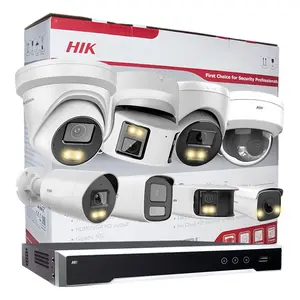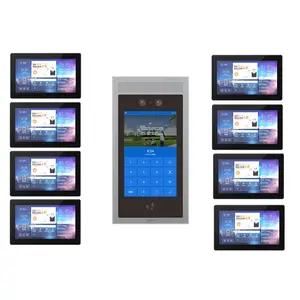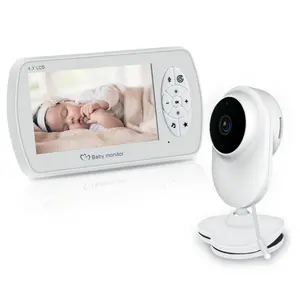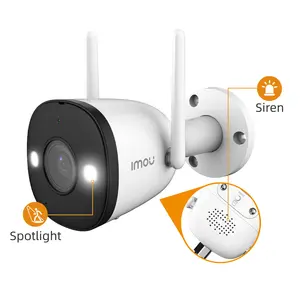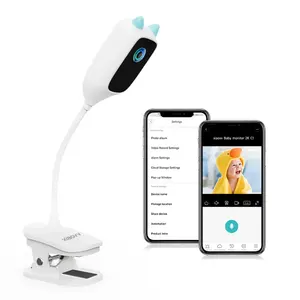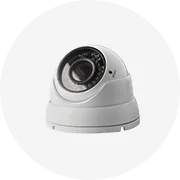Phổ biến trong ngành của bạn






360 độ chiếm PIR Trần chuyển động cảm biến chuyển động chuyển đổi con người hiện diện cảm biến
Sẵn sàng vận chuyển
196.138 ₫ - 216.516 ₫
Đơn hàng tối thiểu: 1 Cái
Vận chuyển mỗi chiếc: 586.375 ₫





Bán Sỉ Cảm Biến Chuyển Động PIR 360 Độ Gắn Trần Điện Áp Thấp
866.061 ₫ - 1.248.147 ₫
Đơn hàng tối thiểu: 100 Cái







360 độ chiếm bề mặt gắn con người tự động tắt máy dò ánh sáng PIR Trần chuyển động cảm biến chuyển động chuyển đổi
Sẵn sàng vận chuyển
196.138 ₫ - 216.516 ₫
Đơn hàng tối thiểu: 1 Cái
Vận chuyển mỗi chiếc: 586.375 ₫







Ngoài Trời IP65 12M Phạm Vi Phát Hiện Rộng Máy Dò Kép Treo Tường Cảm Biến Chuyển Động PIR
82.786 ₫ - 94.758 ₫
Đơn hàng tối thiểu: 200 Cái

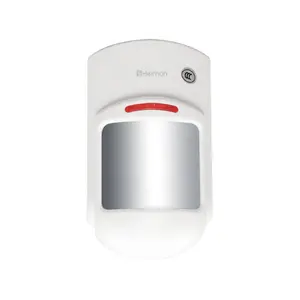




Heiman HM-801w Không Dây Cảm Biến Chuyển Động Lò Vi Sóng Ngoài Trời Mô Hình Máy Dò Pir
221.355 ₫ - 251.158 ₫
Đơn hàng tối thiểu: 2 Cái







Cảm Biến Chuyển Động PIR Hồng Ngoại 220V Gắn Tường Ngoài Trời Cảm Biến Chuyển Động PIR Phát Hiện 180 Độ
Sẵn sàng vận chuyển
25.473 ₫ - 50.945 ₫
Đơn hàng tối thiểu: 10 Cái
Vận chuyển mỗi chiếc: 65.719 ₫


Dài khoảng cách 180 độ treo tường PIR Cảm Biến Chuyển Động
25.473 ₫ - 101.890 ₫
Đơn hàng tối thiểu: 1 Cái






Cảm Biến Chuyển Động Hồng Ngoại Pir Khoảng Cách 180 Độ 12M Gắn Tường Cho Đèn
Sẵn sàng vận chuyển
70.814 ₫ - 92.975 ₫
Đơn hàng tối thiểu: 300 Cái
Vận chuyển mỗi chiếc: 10.954 ₫






Cảm Biến Chuyển Động 220V Chuyển Động Detector Tự Động Hồng Ngoại PIR Cảm Biến 110V 180 Bằng Rotating Ngoài Trời Hẹn Giờ Chuyển Đổi Ánh Sáng
Sẵn sàng vận chuyển
70.814 ₫ - 126.853 ₫
Đơn hàng tối thiểu: 10 Bộ
Vận chuyển mỗi chiếc: 89.918 ₫









Pdlux PD-PIR136-Z trong nhà treo tường phát hiện chuyển động 180 độ PIR cảm biến chuyển động
38.209 ₫ - 89.154 ₫
Đơn hàng tối thiểu: 1000 Cái
Các tìm kiếm liên quan:
cảm biến chuyển động độ 180 đencảm biến ban đêm dâycảm biến chùm pircảm biến chuyển động 180 độ acled triproof motion sensorcảm biến ban đêm ngoài trờicảm biến ngày và đêm 12vcảm biến deckenleuchtecảm biến chuyển động pir 110 độcảm biến pir khoảng cách cảm biến pircảm biến chuyển động pir 40 métcảm biến chuyển động pir đường dàicảm biến chuyển động pir sk806cảm biến chuyển động hồng ngoại 180 độcảm biến chuyển động pir tầm xa






Cảm Biến Chuyển Động Hồng Ngoại Gắn Tường IP44, Cảm Biến Chuyển Động Hồng Ngoại 180 Độ Ngoài Trời
58.078 ₫ - 61.644 ₫
Đơn hàng tối thiểu: 1 Cái






180 Độ Tường Thời Gian Chuyển Đổi Chậm Trễ Tiếp Sức PIR Hồng Ngoại Cảm Biến Chuyển Động Cho Ánh Sáng Điều Khiển
81.512 ₫
Đơn hàng tối thiểu: 1 Cái






Bề mặt gắn kết PIR trần cảm biến chuyển động Detector chuyển đổi ánh sáng 180 độ cảm biến chuyển động
15.029 ₫ - 19.105 ₫
Đơn hàng tối thiểu: 2 Cái



Trung Quốc Nhà Máy 180 độ mini PIR dò chuyển động cảm biến hồng ngoại AC 110 đến 240V ngoài trời không thấm nước chống bụi IR chuyển động chuyển đổi
76.418 ₫ - 89.154 ₫
Đơn hàng tối thiểu: 500 Cái






Nhà Máy Cảm Biến Chuyển Động 220V Phát Hiện Chuyển Động Hồng Ngoại Tự Động Cảm Biến PIR 110V 180 Độ Xoay Ngoài Trời Hẹn Giờ Ánh Sáng
71.323 ₫ - 81.512 ₫
Đơn hàng tối thiểu: 1 Cái






180 Độ Thông Minh An Ninh Nhà Trắng Điều Chỉnh Không Thấm Nước Tường Cảm Biến Chuyển Động Pir
25.473 ₫ - 66.229 ₫
Đơn hàng tối thiểu: 50 Cái






180 an ninh PIR cảm biến chuyển động hồng ngoại độ 220V treo tường Trắng PIR cảm biến chuyển động
66.229 ₫ - 129.910 ₫
Đơn hàng tối thiểu: 100 Cái






AC85V-265V PIR Có Thể Điều Chỉnh 180 Độ Tia Hồng Ngoại Cảm Biến Chuyển Động Con Người
25.473 ₫ - 101.890 ₫
Đơn hàng tối thiểu: 100 Cái





BM22S4221-1 mô-đun phát hiện PIR xoay có thể điều chỉnh 180 độ tia hồng ngoại cảm biến chuyển động của con người
84.059 ₫ - 89.154 ₫
Đơn hàng tối thiểu: 1000 Cái






Ac220v 12m ngoài trời IP44 không thấm nước bề mặt gắn kết hồng ngoại PIR cảm biến chuyển đổi 180 độ điều chỉnh tự động PIR cảm biến chuyển động
54.257 ₫ - 63.681 ₫
Đơn hàng tối thiểu: 20 Cái






Công Nghệ Phát Hiện PIR Kép Cảm Biến Chuyển Động PIR Miễn Dịch Thú Cưng Ngoài Trời Với Đầu Ra Rơ Le
Sẵn sàng vận chuyển
560.393 ₫
Đơn hàng tối thiểu: 1 Cái
Vận chuyển mỗi chiếc: 282.999 ₫






Nhà Giá Rẻ Ngoài Trời Lò Vi Sóng Chuyển Động Cơ Khí Pir Cảm Biến Chuyển Đổi Với Cảm Biến Ánh Sáng
Sẵn sàng vận chuyển
147.740 ₫ - 199.449 ₫
Đơn hàng tối thiểu: 1 Cái
Vận chuyển mỗi chiếc: 201.742 ₫






Cảm Biến Chuyển Động PIR Treo Tường 220V Với Giá Nhà Máy (PS-SS8V)
58.587 ₫ - 84.059 ₫
Đơn hàng tối thiểu: 500 Cái



Miễn phí in logo treo tường PIR cảm biến chuyển động cho điều khiển ánh sáng với giá nhà máy
Sẵn sàng vận chuyển
68.776 ₫ - 99.343 ₫
Đơn hàng tối thiểu: 10 Cái
Vận chuyển mỗi chiếc: 63.681 ₫






Wgsensor ZigBee phát hiện chuyển động ZigBee con người hiện diện cảm biến Wifi tuya không dây tuya PIR cảm biến chuyển động Radar hiện diện cảm biến
636.810 ₫ - 662.282 ₫
Đơn hàng tối thiểu: 100 Cái






Bán Chạy Cảm Biến Chuyển Động Gắn Tường Công Tắc Cảm Biến Chuyển Động Hồng Ngoại 180 Độ Từ SHCET
69.795 ₫ - 71.323 ₫
Đơn hàng tối thiểu: 1 Cái






Sản Phẩm Bán Buôn Chất Lượng Tốt Nhất-Cảm Biến Chuyển Động Loại Tường 180 Độ Chất Lượng Hàng Đầu Siêu Chất Lượng
279.942 ₫
Đơn hàng tối thiểu: 1800 Cái




Máy Dò PIR 40Mm Xoay Điều Chỉnh 180 Độ Tia Hồng Ngoại Cảm Biến Chuyển Động Con Người Thời Gian Trễ Chuyển Đổi
89.154 ₫ - 101.890 ₫
Đơn hàng tối thiểu: 1 Cái






AC 220V-240V 110V 180 Độ Ngoài Trời IP44 An Ninh PIR Hồng Ngoại Cảm Biến Chuyển Động Detector Phong Trào Chuyển Đổi Max 12M 50Hz 3-2000LUX
Sẵn sàng vận chuyển
65.719 ₫ - 74.889 ₫
Đơn hàng tối thiểu: 10 Cái
Vận chuyển mỗi chiếc: 101.890 ₫





Szmyq tuya nhà thông minh PIR cảm biến yếu tố nhạy cảm cắm nghịch lý gắn cơ sở chuyển động nhà ở phát hiện cơ thể Micro
Sẵn sàng vận chuyển
501.806 ₫ - 710.680 ₫
Đơn hàng tối thiểu: 1 Cái
Vận chuyển mỗi chiếc: 156.910 ₫






AC 90-255V/AC 1000W cơ thể con người cảm biến cảm ứng điều khiển ánh sáng PIR cảm biến chuyển động chuyển đổi ánh sáng
66.229 ₫ - 78.965 ₫
Đơn hàng tối thiểu: 100 Cái






Công Tắc Phát Hiện Cảm Biến Chuyển Động, Công Tắc Hồng Ngoại Cảm Biến Chuyển Động Pir Gắn Tường 180 Độ
58.587 ₫ - 63.681 ₫
Đơn hàng tối thiểu: 200 Cái


Công Tắc Cảm Biến Chuyển Động PIR An Ninh 240 Độ 50Hz Ngoài Trời 180 V Công Tắc Chuyển Động Cảm Biến Chuyển Động Hồng Ngoại PIR
101.890 ₫ - 305.669 ₫
Đơn hàng tối thiểu: 1 Cái






Sruis Công Tắc Cảm Biến Chuyển Động PIR An Ninh 240 Độ 50Hz Ngoài Trời 180 V Mới Cảm Biến Chuyển Động Hồng Ngoại PIR Chuyển Động
44.068 ₫ - 62.663 ₫
Đơn hàng tối thiểu: 5 Cái


Công Tắc Cảm Biến Chuyển Động Ngoài Trời 240V, Công Tắc Cảm Biến Chuyển Động Hồng Ngoại PIR, Công Tắc Cảm Biến Chuyển Động Hồng Ngoại 180 Độ 50Hz
101.890 ₫ - 305.669 ₫
Đơn hàng tối thiểu: 1 Cái






Đầu Dò Chuyển Động Pir Phát Hiện 180 Độ Cài Đặt Có Thể Điều Chỉnh Cảm Biến Chuyển Động Hồng Ngoại
Sẵn sàng vận chuyển
67.502 ₫ - 89.154 ₫
Đơn hàng tối thiểu: 50 Cái
Vận chuyển mỗi chiếc: 24.199 ₫






ES-P15C 180 Độ 12M Hồng Ngoại Ngoài Trời Cảm Biến Chuyển Động Pir
25.473 ₫ - 76.418 ₫
Đơn hàng tối thiểu: 1000 Cái




Pdlux PD-PIR152 180 độ không thấm nước PIR dò chuyển động thụ động cảm biến hồng ngoại
25.473 ₫ - 89.154 ₫
Đơn hàng tối thiểu: 1000 Cái
Các danh mục hàng đầu
Giới thiệu về cảm biến chuyển động pir 180 độ
Alibaba.com cung cấp các sản phẩm 438 cảm biến chuyển động pir 180 độ.

